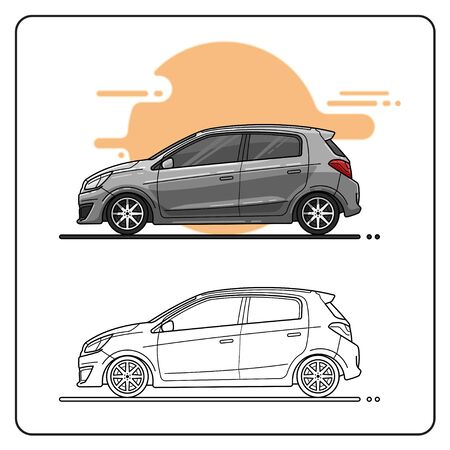1. Introduction
Car sharing has become an increasingly popular alternative to traditional car ownership. With more people looking for cost-effective and environmentally friendly transportation options, car sharing services offer a practical solution. These programs allow users to rent cars for short periods, typically by the hour or day, without the long-term commitment or expenses of owning a vehicle.
How Car Sharing Works
Car sharing companies operate in cities and suburban areas, providing vehicles that can be reserved through a mobile app or website. Users simply locate a nearby car, unlock it using their smartphone, drive it as needed, and return it to a designated spot when they’re done. Many services cover fuel, insurance, and maintenance within the rental fees, making it a convenient option for occasional drivers.
Growing Popularity of Car Sharing
The rise of car sharing is driven by several factors, including urbanization, high vehicle costs, and environmental concerns. People living in crowded cities often find car ownership expensive and impractical due to parking shortages and maintenance costs. Car sharing offers the flexibility of having a car when needed without the burden of ownership.
Car Sharing vs. Car Ownership
| Factor | Car Sharing | Car Ownership |
|---|---|---|
| Cost | Pay per use (no insurance, maintenance, or fuel costs) | High upfront costs plus ongoing expenses |
| Convenience | Access cars as needed, no long-term commitment | Always available but requires maintenance and storage |
| Environmental Impact | Promotes fewer cars on the road, reducing emissions | More personal vehicles contribute to traffic and pollution |
| Flexibility | Choose different types of vehicles for different needs | Limited to the vehicle you own |
With its affordability and convenience, car sharing continues to gain traction as an alternative to private car ownership. As more people embrace this model, cities may experience reduced traffic congestion and lower carbon emissions, contributing to a more sustainable urban environment.
2. Environmental Benefits of Car Sharing
Reduction in Greenhouse Gas Emissions
One of the biggest environmental benefits of car sharing is the reduction in greenhouse gas emissions. With fewer individual car owners and more people opting for shared vehicles, the total number of cars on the road decreases. This leads to less fuel consumption and fewer emissions being released into the atmosphere. Studies have shown that car sharing programs can reduce carbon dioxide (CO2) emissions significantly, helping to combat climate change.
Lower Resource Consumption
Car sharing also helps in reducing the overall consumption of natural resources. Since fewer cars are needed to serve the same number of people, the demand for raw materials like steel, aluminum, and plastic decreases. Additionally, fewer cars mean a lower number of vehicles being manufactured, which translates to reduced energy usage in production and lower waste from end-of-life vehicle disposal.
Comparison of Resource Consumption: Private Cars vs. Car Sharing
| Factor | Private Car Ownership | Car Sharing |
|---|---|---|
| Number of Vehicles per 100 People | High | Lower |
| Raw Material Usage | Significant | Reduced |
| Manufacturing Energy Consumption | High | Lower |
Decreased Urban Congestion
Another significant advantage of car sharing is the reduction of urban congestion. With fewer people owning cars, there are fewer vehicles on the road, leading to less traffic congestion. This not only helps in reducing travel time but also minimizes idling time, which in turn lowers fuel consumption and emissions. Furthermore, with reduced congestion, cities can prioritize space for greener initiatives like bike lanes and pedestrian-friendly zones.
![]()
3. Challenges and Limitations
While car sharing offers many environmental benefits, it is not without its challenges. Several factors can limit the effectiveness and accessibility of car-sharing services, impacting their sustainability and convenience.
Vehicle Availability
One of the most common concerns for users is vehicle availability. Unlike personal car ownership, where a car is always accessible, car-sharing services depend on the availability of shared vehicles. This can lead to inconvenience, especially in high-demand areas or during peak hours.
| Factor | Impact |
|---|---|
| High demand during rush hours | Limited availability, leading to longer wait times |
| Uneven distribution of vehicles | Certain areas may have fewer cars, making them less reliable |
| Vehicle maintenance and downtime | Fewer cars available when maintenance is required |
Dependence on Infrastructure
Car-sharing services rely heavily on infrastructure, which can be a limiting factor in their expansion and effectiveness. Cities need designated parking zones, charging stations for electric car-sharing fleets, and efficient public transportation integration to ensure these services operate smoothly.
Key Infrastructure Challenges
- Parking Availability: Not all cities have designated spaces for shared vehicles, making it difficult for users to find convenient pick-up and drop-off locations.
- Charging Stations for Electric Vehicles: If a fleet includes electric vehicles, charging infrastructure must be available throughout the service area.
- Public Transit Connectivity: Car-sharing works best when integrated with public transportation, allowing users to combine different modes of travel efficiently.
Behavioral Barriers
Encouraging people to switch from private car ownership to car sharing requires a significant shift in mindset and habits. Some users may feel uncomfortable sharing vehicles or may be reluctant to give up the convenience of having a personal car.
Common Behavioral Barriers
- Perceived Inconvenience: Some individuals prefer the certainty of having their own car available at all times.
- Hygiene and Cleanliness Concerns: Sharing a vehicle with strangers may deter some users.
- Trust and Security: Concerns about the reliability of vehicles and safety while using shared cars can be a psychological barrier.
Overcoming these challenges requires improvements in technology, urban planning, and public awareness to make car-sharing services more reliable, convenient, and appealing.
4. Comparison with Traditional Car Ownership
One major aspect of evaluating car sharing’s environmental impact is comparing it with traditional car ownership. This includes analyzing emissions, costs, and urban space efficiency. Lets take a closer look at how these two modes of transportation differ.
Emissions and Environmental Impact
Car sharing can lead to lower overall emissions per person compared to private vehicle ownership. Since shared cars are used more frequently and often include fuel-efficient or electric models, they tend to have a smaller carbon footprint. Additionally, fewer cars on the road mean lower production emissions, which contributes to overall sustainability.
Cost Comparison
Owning a car involves multiple costs, including gas, insurance, maintenance, and depreciation. Car sharing, on the other hand, allows users to pay only for the time or distance they use a vehicle, eliminating many fixed costs. Below is a comparison:
| Factor | Car Ownership | Car Sharing |
|---|---|---|
| Initial Purchase Price | High | None |
| Maintenance & Repairs | Owners Responsibility | Covered by Service |
| Insurance Costs | Fixed Monthly/Annual | Included in Fees |
| Fuel Expenses | Owner Pays | Often Included |
Urban Space Efficiency
Car sharing can significantly reduce the number of vehicles occupying urban spaces. Studies show that one shared car can replace multiple privately owned vehicles, leading to less congestion and freeing up parking areas for other developments, such as green spaces or pedestrian-friendly zones.
Conclusion
When comparing car sharing with private vehicle ownership, it is clear that car sharing offers significant benefits in terms of emissions, cost savings, and urban space efficiency. While it may not be the perfect solution for everyone, those who live in cities with reliable car-sharing services can enjoy an affordable, environmentally friendly, and convenient alternative to owning a car.
5. Future of Sustainable Transportation
As car sharing continues to evolve, its future is closely tied to advancements in electric and autonomous vehicles, supportive policies, and urban planning. These elements will play a crucial role in determining how sustainable transportation develops in the coming years.
Potential Integration with Electric and Autonomous Vehicles
The combination of car sharing with electric and autonomous vehicles presents an opportunity to reduce emissions and improve efficiency. Electric shared cars can significantly lower carbon footprints by replacing gasoline-powered vehicles, while autonomous technology may optimize car usage by reducing the number of idle vehicles.
Benefits of Electric and Autonomous Vehicle Integration
| Category | Potential Benefits |
|---|---|
| Electric Vehicles | Lower emissions, reduced dependence on fossil fuels, and quieter urban environments |
| Autonomous Vehicles | Optimized routes, fewer traffic accidents, and lower congestion |
Policy Support for Sustainable Car Sharing
Government policies will play a key role in promoting sustainable car sharing. Incentives such as tax breaks for electric vehicle fleets, investments in charging infrastructure, and regulations supporting autonomous vehicle testing can ensure smoother integration into transportation networks.
Urban Planning Considerations
City planning must adapt to accommodate car sharing systems. This includes optimizing parking space allocation, increasing the number of charging stations for shared electric vehicles, and designing traffic systems to support autonomous vehicle deployment.
Strategies for Urban Planning
- Designating shared mobility lanes to improve traffic flow
- Reducing private car dependence by enhancing public transit connectivity
- Encouraging mixed-use developments to reduce commuting distances
With the right combination of technology, policy, and urban development, car sharing has the potential to become an even more sustainable and scalable transportation solution.


